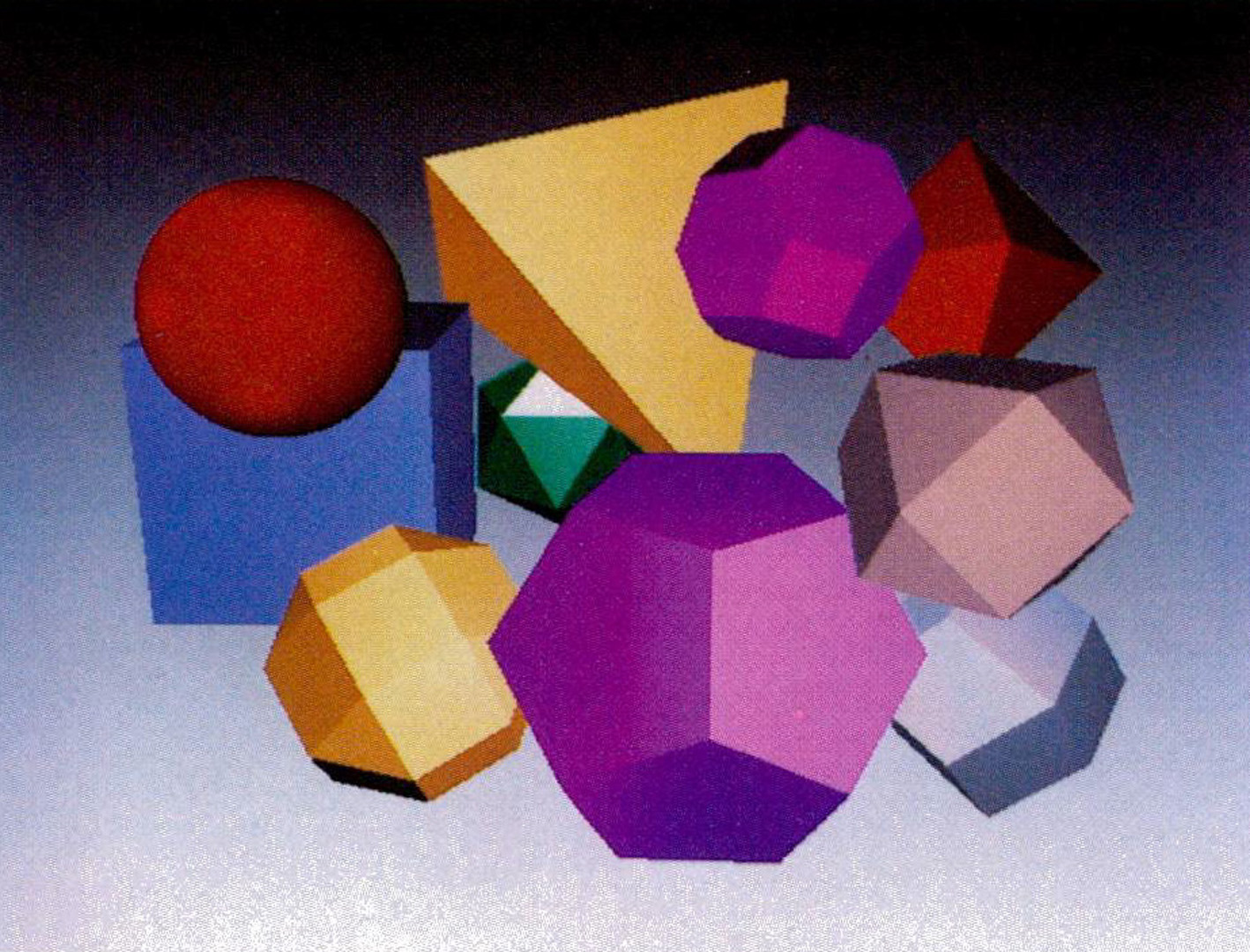“Edge Inference with Applications to Antialiasing” by Bloomenthal
Conference:
Type:
Title:
- Edge Inference with Applications to Antialiasing
Presenter(s)/Author(s):
Abstract:
An edge, when point-sampled for display by a raster device and not aligned with a display axis, appears as a stair-case.This common aliasing artifact often occurs in computer images generated by two- and three-dimensional algorithms. The precise edge information often is no longer available but, from the set of vertical and horizontal segments which form the staircase, an approximation to the original edge with a precision beyond that of the raster may be inferred. This constitutes a smoothing of the staircase edge. Among other applications, the inferred edges may be used to reshade the pixels they intersect, thereby antialiasing the inferred edges. The antialiased inferred edges prove a more attractive approximation to the real edges than their aliased counterparts. Presented here are algorithms for the detection and smoothing of edges and the filtering of an image in accordance with the inferred edges.
References:
1. Agrawala, A. and Kulkarni, A., “A Sequential Approach to the Extraction of Shape Features”, Computer Graphics and Image Processing, v.6, December 1977, pp. 538-557.]]
2. Baumgart, B.G., “Geometric Modeling for Computer Vision”, Report STAN-CS-74-463, Stanford Artificial Intelligence Laboratory, Stanford University, 1974.]]
3. Butler, J.W., Butler M.K., and Stroud A., “Automatic Analysis of Chromosomes”, Data Acquisition and Processing in Biology and Medicine, v.3, pp. 261-275, Pergamon, Oxford, 1963.]]
4. Catmull, E.E., “A Subdivision Algorithm for Computer Display of Curved Surfaces”, Ph.D. Thesis, University of Utah, Computer Science Department, 1974.]]
5. Catmull, E.E., “A Hidden-Surface Algorithm with Antialiasing”, Computer Graphics, v.12, August, 1978.]]
6. Crow, F.C., “The Aliasing Problem in Computer Generated Shaded Images”, Communications of the ACM, v.20, November, 1977.]]
7. Crow, F.C., “A Comparison of Antialiasing Techniques”, IEEE Computer Graphics and Applications, v.1, January, 1981.]]
8. Duda, R.O. and Hart, P.E., Pattern Classification and Scene Analysis, John Wiley and Sons, New York, 1973.]]
9. Dungan, W., Stenger, A., and Sutty, G., “Texture Tile Considerations for Raster Graphics”, Computer Graphics, v.12, August, 1978.]]
10. Feibush, E.A., Levoy, M., and Cook, R.L., “Synthetic Texturing Using Digital Filters”, Computer Graphics, v.14, July, 1980.]]
11. Freeman, H., “On the Encoding of Arbitrary Geometric Configurations”, IRE Trans. EC- 10, pp. 260-268, June, 1961. 1p Freeman, H., “Boundary Encoding and Processing”, Picture Processing and Psychopictorics, B. Lipkin and A. Rosenfeld, editors, Academic Press, Inc., NY, 1970.]]
12. Pitteway, M. and Watkinson, D., “Bresenham’s Algorithm with Grey Scale,” Communications of the ACM, v.23, November 1980, pp. 625-626.]]
13. Roth, S.D., “Ray Casting for Modeling Solids”, Computer Graphics and Image Processing, v.18, February, 1982, p. 109-144.]]
14. Rosenfeld, A. and Kak, A.C., Digital Picture Processing, Academic Press, New York, 1969.]]
15. Stern, G., “A System for Computer-Aided Keyframe Animation” Ph.D. Thesis, University of Utah, Computer Science Department, 1978.]]
16. Turkowski, K., “Antialiasing Through the Use of Coordinate Transformations”, Computer Graphics, v.16, July, 1982.]]
17. Whitted, T., “An Improved Illumination Model for Shaded Display”, Communications of the ACM, v.23, June, 1980.]]
18. Williams, L.J., “Pyramidal Parametrics”, Siggraph notes, Advanced Image Synthesis Seminar, August, 1981; see also Computer Graphics, v.17, July, 1983.]]
19. Williams, L.J., “Brute Force in Image Space”, Ph.D. Thesis (unpublished), University of Utah, Computer Science Department.]]




